Bow-and-arrow target golf can be fun on occasion. But if you just unwrapped a new driver, all you can think about is smashing the ball all over the yard. Fortunately for the big bashers out there, and the wannabes, too, there is a fistful of public-access courses in the United States that combine world-class design with enormously spacious landing areas.
Here are the top 10 widest American courses you can play.
Kapalua (Plantation Course)—Maui, Hawaii
Home to the PGA Tour’s The Sentry (Tournament of Champions), this 1991 Bill Coore & Ben Crenshaw creation features heavily sloping, extra-wide landing areas draped atop a former pineapple plantation. At the 2023 Sentry, fairways averaged between 45 and 50 yards in width—close to 20 yards wider than the Tour average—including mammoth landing spots at the 545-yard par-five 9th; at the downhill, 546-yard par-four 17th; and at the downhill, 672-yard par-five 18th. The latter two holes, both with jungle-strewn canyons to the left and Pacific Ocean views beyond, are among the most exhilarating in golf. The fairways play even wider for regular resort play, but reliably strong breezes can effectively squeeze some of the targets.

Gamble Sands (Sands Course)—Brewster, Wash.
David McLay Kidd’s nine-year-old wild ride features enormously wide, rumpled fairways that twist through massive sand ridges and lead to equally firm, gigantic greens. When a course stretches 7,227 yards, but is sloped a puny 120, that’s practically code for F-U-N. The boldly bunkered 2nd hole begins with spectacular vistas of the Columbia River and then careens to the left like the third turn at Talladega. Due to the crispy, links-like turf, you can reach the green with less than a driver, but your options are so numerous, half the fun is simply in the selection process. It’s almost like having three fairway landing areas—but with just one fairway. At the dogleg right, 426-yard par-four 11th, the fairway is 100 yards wide with much of it obscured. Trust it’s there, and bang away.
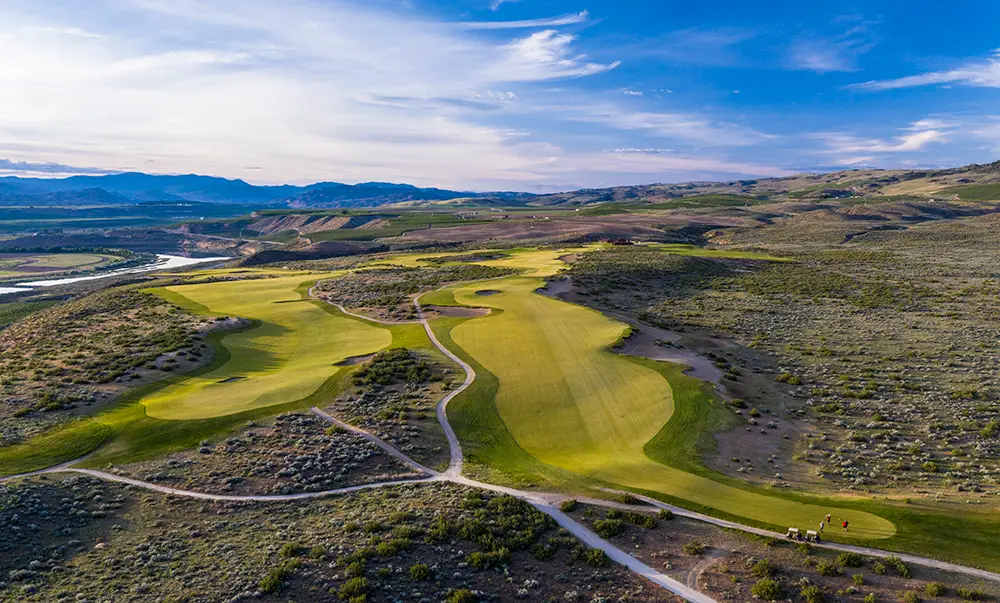
Old Macdonald at Bandon Dunes Golf Resort—Bandon, Ore.
This 2010 Tom Doak/Jim Urbina collaboration features turnpike-wide landing areas and gigantic, heaving greens. To get the ball into the hole, however, you’ll need to master angles, strategy, trajectory, and the ground game. You begin on what Doak called, “my favorite opening hole we’ve ever built,” a 341-yard par four known as “Double Plateau.” The driving zone is gigantic, which sets the tone for the rest of the round. Yes, the wind blows at Bandon, but at Old Mac, there’s a ton of room to accommodate strategic driving.
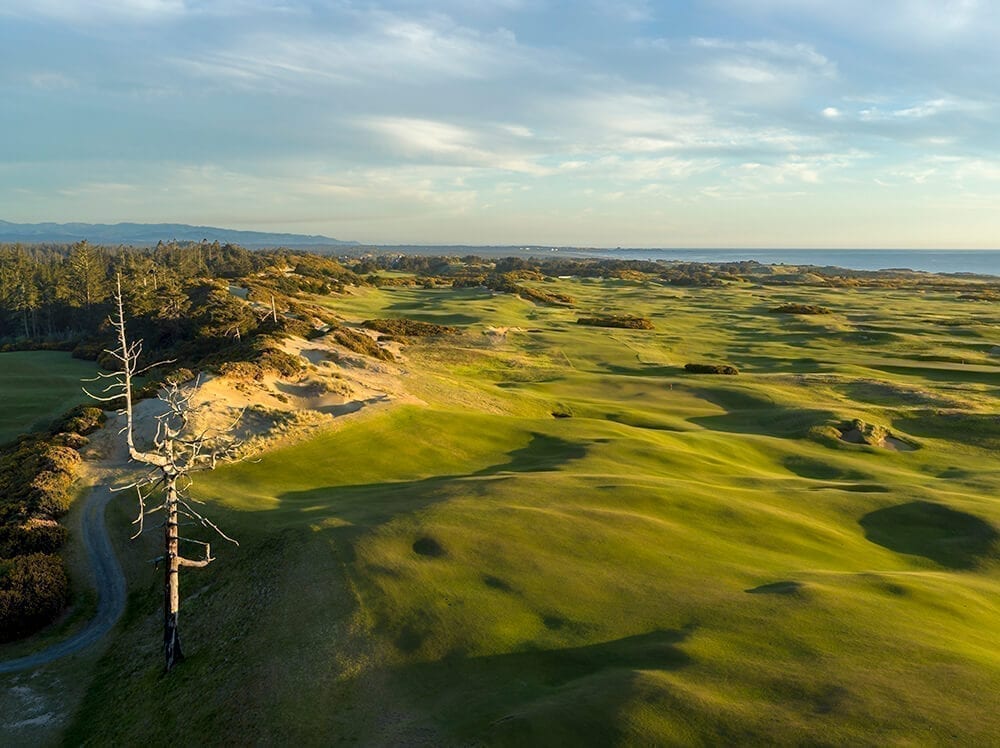
Landmand Golf Club—Homer, Neb.
Located in the northeast corner of the Cornhusker State, the 7,200-yard par-73 layout by King-Collins Golf Course Design sprawls with abundantly roomy fairways that are 80 to more than 100 yards in width. Each provides multiple routes to the hole. In some cases, a single fairway that serves two holes measures more than 150 yards wide. Yet, the scale of the landscape is so vast, the fairways look almost normal size by comparison. The putting greens are equally enormous. Walkable, though with moderate elevation change, Landmand is pure fun, especially for the drive-for-show, putt-for-dough crowd.
Rustic Canyon Golf Course—Moorpark, Calif.
The course that many consider to be the best bang for the buck in the lower 48 is Rustic Canyon, a 2002 creation from Gil Hanse, Jim Wagner, and Geoff Shackelford. Located 45 minutes northwest of Los Angeles, Rustic Canyon dazzles with strategic options and the bouncy game, all made possible by fairways wide enough to yield risk/reward choices and emphasis on angles. The opening tee shot sets the stage, on a 540-yard par five where a 70-yard-wide fairway awaits. It’s nearly impossible to miss—but then the fun starts. A slender, sand-filled barranca that twists on a diagonal complicates your decisions on both the second and third shots. Thought-provoking shots continue throughout the round, to vast, but not unguarded fairways.
Talking Stick Golf Club (O’odham Course)—Scottsdale, Ariz.
Crafted by Bill Coore & Ben Crenshaw on tribal land in 1997, Talking Stick is a 36-hole complex that offers the tree-lined Piipaash (formerly the South) which narrows the generous fairways to some extent, and the nearly treeless, completely house-less O’odham (formerly the North) with its flat, jumbo-sized fairways. At 72 yards across, the 552-yard par-five 2nd hole was once described by Tom Doak as home to “the widest, plainest-looking fairway I have ever seen in golf,” yet he considers the hole compelling, due to its strategic features which include a linear OB boundary left and two bunkers guarding the front-right of the green.
Mammoth Dunes at Sand Valley Golf Resort—Nekoosa, Wis.
Designed by David McLay Kidd in 2018, Sand Valley’s Mammoth Dunes checks every box, from its distinctive, sand-based setting; its joy-filled appeal for low- and high-handicappers alike; and its plethora of individually memorable, strategy-laced holes unfurled on a massive scale. Enormously roomy, crinkled fairways allow folks to choose their own path to the target, amid vast areas of open sand and gargantuan greens. While the landing areas are plenty wide—some 100 yards across—finding the spot that provides the more advantageous angle into the green is paramount. At the 410-yard par-four 2nd hole, the difficult-to-miss fairway nonetheless offers a choice: A long drive up the right side can mean a great look at the green, but it risks bringing a sandy waste area into play. The left side offers a haven for shorter tee shots, but then asks for a demanding approach over that sand sprawl.
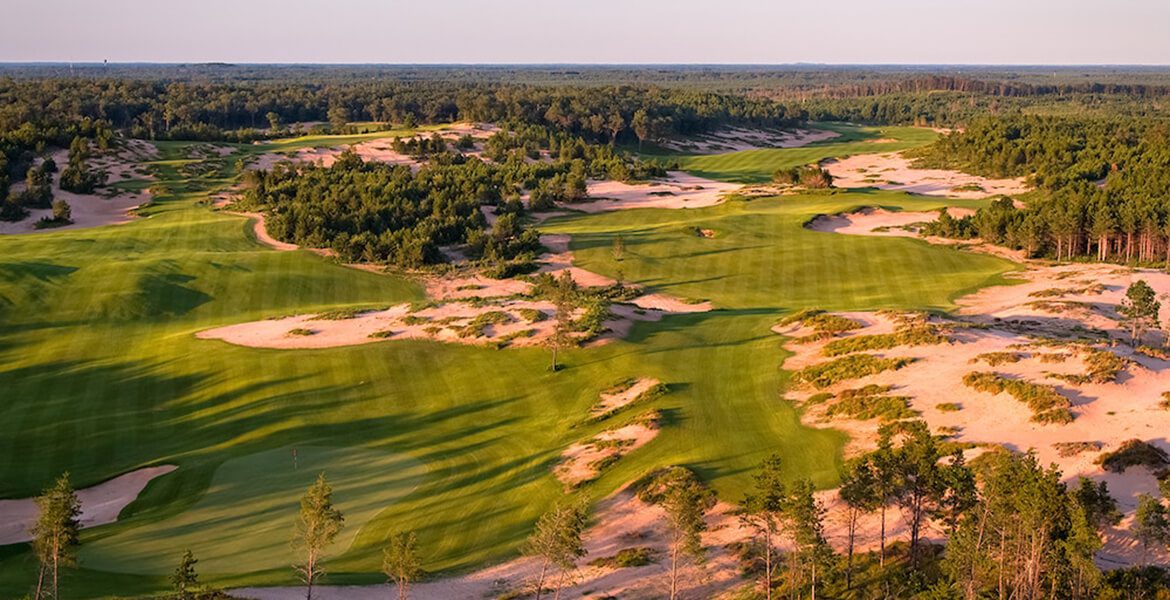
Chambers Bay—University Place, Wash.
Home to the 2015 U.S. Open, this 7,940-yard, walking-only, Robert Trent Jones II design unfolds atop an old gravel mine at the southeast tip of Puget Sound, 45 minutes south of Seattle. The width—and eye candy—commences at the first hole, a par four that shares a fairway with the 18th a la St. Andrews, amid 50-foot dunes. For girth confined to one hole, the 13th earned the prize, with a fairway that stretched 115 yards across. Called “Eagle Eye,” U.S. Open competitors played it as a par four, amid yardages that ranged from 512 yards to 551. Even at that width, a struggling Tiger Woods managed to miss it by 20 yards in the first round.
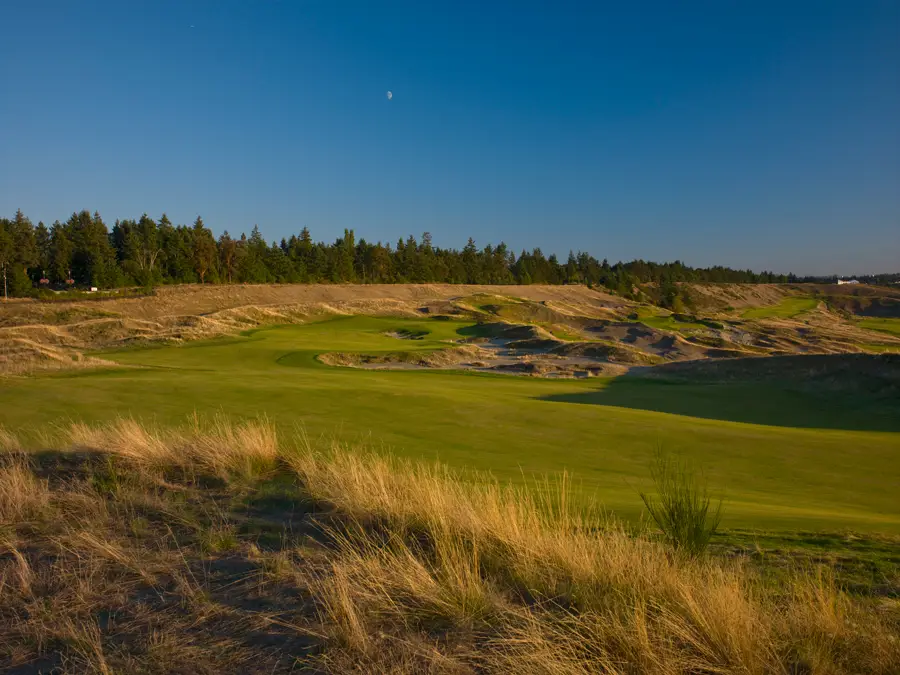
The Prairie Club (Dunes)—Valentine, Neb.
Picture the widest fairways imaginable—then double it—and you have the driving zones at this 2010 Tom Lehman/Chris Brands design carved into the heaving, wind-sculpted terrain of northwestern Nebraska. Multiple fairways exceed 100 yards in width, though they’re hardly the easiest to hit, owing to the extremely firm, topsy-turvy landing areas that will funnel side-spinning tee shots into dense native fescues—or worse, into some of the largest formalized bunkers ever created. Due to the epic scale of the property, all the design features are of extraordinary size. The 478-yard par-four 2nd hole illuminates the virtues of the Dunes. A 70-yard-wide fairway looks accommodating, but it slopes from left to right—and edging the right-hand side in linear fashion is out-of-bounds. The best angle of approach to the green, however, is from that dangerous right side to avoid a huge, sculpted bunker at the left-front of the green.
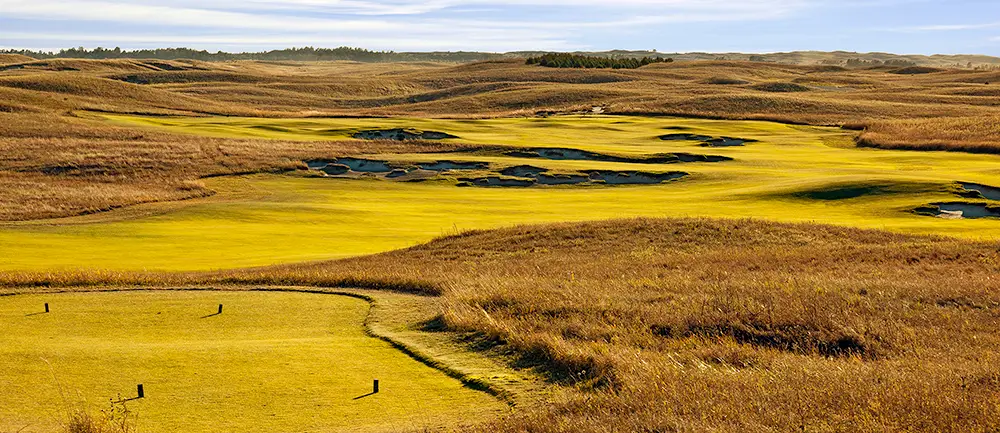
Erin Hills—Erin, Wis.
Carved into wildly heaving farmland on a gigantic 652-acre scale, 35 miles northwest of Milwaukee, this super-sized 2006 design from Michael Hurdzan, Dana Fry, and Ron Whitten played host to the 2017 U.S. Open. At more than 7,800 yards, amid ridges, tall tawny fescue grasses, penal bunkers, and sprawling, chaotically undulating fairways, Erin Hills was intended to be the toughest test the pros had seen in years. Alas, the anticipated 15- to 20-mile-per-hour mid-June breezes failed to materialize, and the game’s best took full advantage of the spacious fairways. As Rory McIlroy put it, when asked about the nasty rough that framed the landing areas, he responded, “We have 60 yards left line to right. You’ve got 156 of the best players in the world here. If we can’t hit it within that avenue, you might as well pack your bags and go home.” Indeed, low-scoring records were shattered during the week. With wide fairways and little wind, the field once again proved, “these guys are good.”
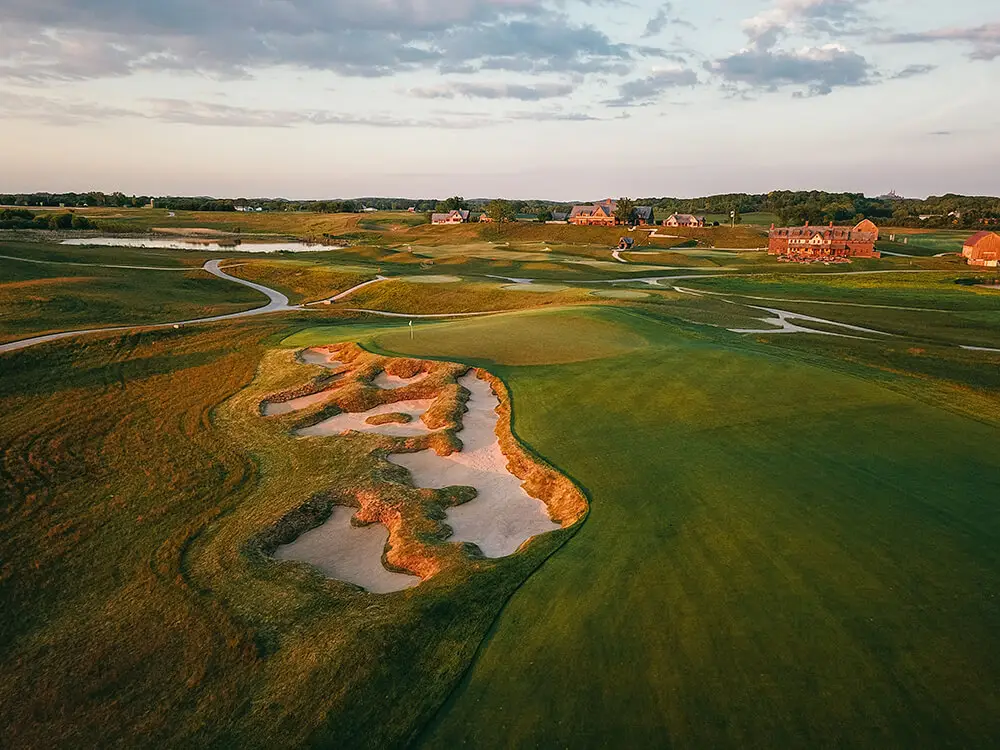
What are the widest golf courses you’ve played? Tell us about them in the comment section.


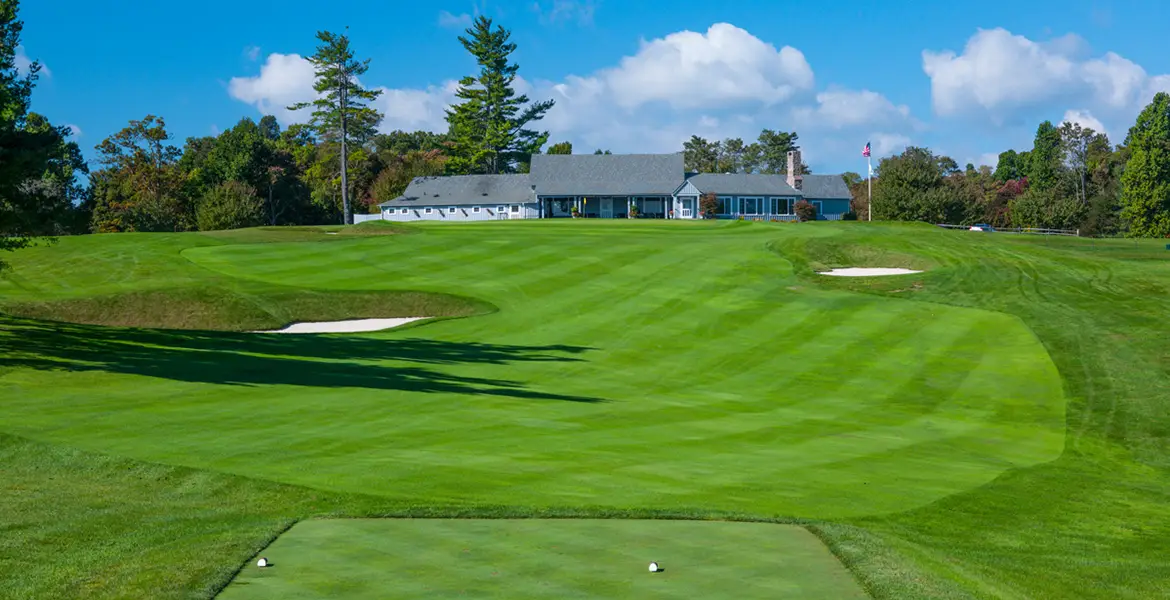
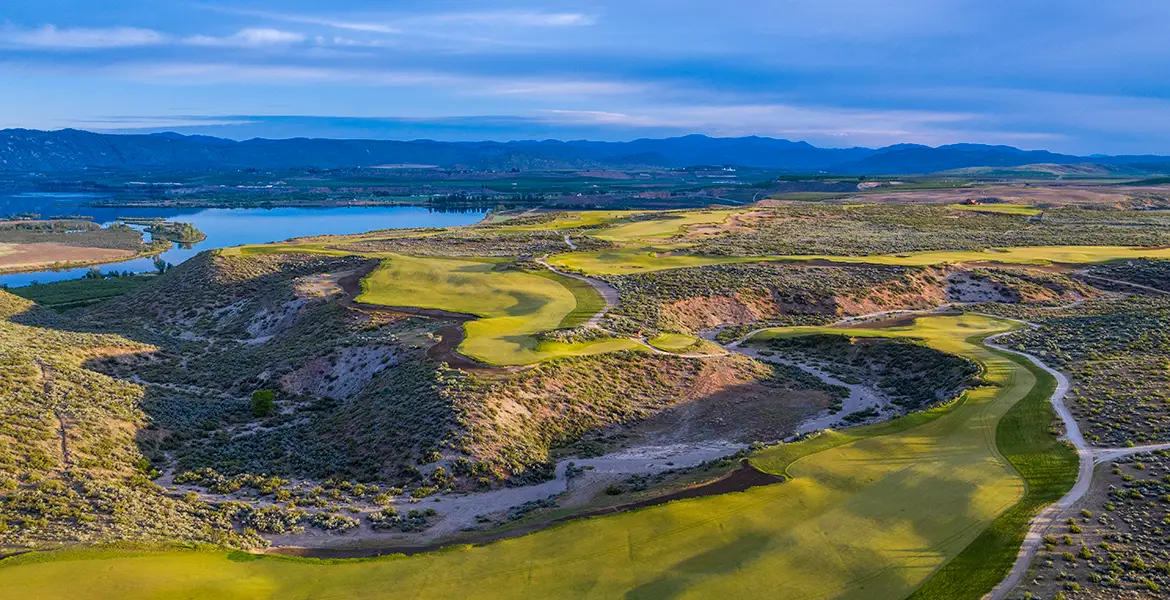



Streamsong Black
Circling Raven 620 acres